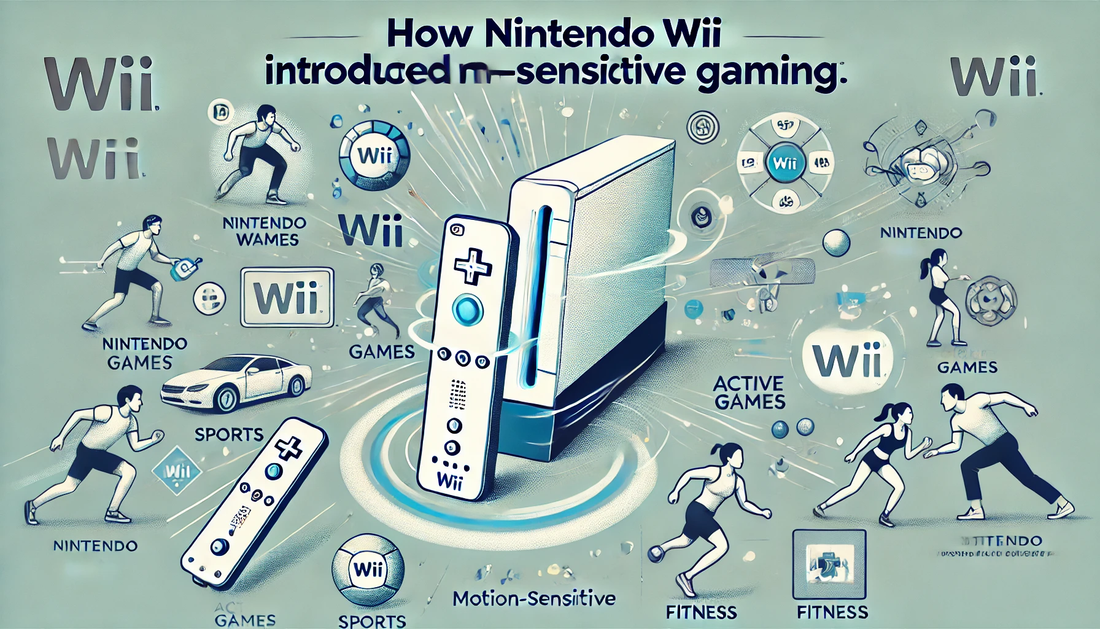Nintendo's Wii was a revolutionary product that changed the gaming industry forever by introducing motion-sensitive gaming. It wasn’t just about better graphics or a faster processor—it was about creating an entirely new way to play.
What lessons can startups learn from this groundbreaking innovation?
In this blog, we’ll explore how the Nintendo Wii disrupted the gaming market, and how startups can replicate similar strategies to shake up their own industries with bold, user-focused innovation.
Innovation through Simplicity: Solving User Pain Points
The Wii didn’t need to compete with other consoles based on power or graphics. Instead, it focused on simplicity.
Nintendo noticed that many people found traditional game controllers intimidating, so they created a more intuitive experience with motion-sensitive controls.
Actionable takeaway: Find a way to simplify your product. Focus on solving real user pain points rather than competing solely on features or specs. Sometimes, the most innovative solutions come from simplifying the user experience.
Creating a New Market: Reaching Untapped Audiences
Nintendo’s decision to focus on motion-sensitive gaming wasn’t just about technology.
They understood that by making gaming more accessible, they could attract new, non-gamer audiences like families, older adults, and casual gamers. This approach expanded their market significantly.
Actionable takeaway: Look for underserved or untapped markets. By tailoring your product to meet the needs of a broader audience, you could unlock entirely new customer segments that your competitors aren’t even targeting.
Innovating the User Experience: Engagement Over Graphics
While competitors like Sony and Microsoft focused on high-definition graphics and complex gameplay, Nintendo emphasized the player experience. The Wii’s motion controls allowed users to engage physically, making gaming more active and social.
Actionable takeaway: Innovate around the user experience. When designing your product, think beyond the traditional features and focus on creating an emotional or physical connection with your users. This can lead to deeper engagement and brand loyalty.
Affordable and Accessible: Winning with Pricing Strategy
Compared to its competitors, the Nintendo Wii was more affordable, making it accessible to a wider audience. Nintendo’s pricing strategy was critical to its success, allowing families and casual gamers to justify the purchase.
Actionable takeaway: Ensure your pricing strategy aligns with your target market. If you want to reach a broader audience, consider how affordability can play a role in lowering barriers to entry, while still delivering value.
Leveraging Unique Features to Build a Community
Nintendo didn't just sell a gaming console; they sold an experience that brought people together. With features like the Wii Sports games, they turned gaming into a shared, physical activity, creating a sense of community among users.
Actionable takeaway: Design features that encourage community engagement. Whether it’s through shared experiences or interactive elements, a sense of community around your product can lead to word-of-mouth marketing and customer loyalty.
First-Mover Advantage: Pioneering Motion-Sensitive Technology
The Wii wasn’t the first attempt at motion-sensitive gaming, but it was the first successful one. Nintendo’s decision to perfect the technology and introduce it to the mass market gave them a first-mover advantage that helped dominate the gaming industry for years.
Actionable takeaway: Being the first to successfully implement new technology or a new approach can give your startup a significant competitive edge. Don’t be afraid to be bold and try something new, even if others have failed before.
Emphasizing Fun and Social Interaction
While other consoles focused on hardcore gamers, Nintendo focused on fun and inclusivity. Games like Wii Sports and Just Dance became cultural phenomena because they were fun, easy to pick up, and social in nature.
Actionable takeaway: Don’t underestimate the power of fun and inclusivity. Whether you’re building a product or service, consider how you can create an experience that’s not just useful, but enjoyable for your users.
Iterating on Success: Building on a Winning Formula
After the success of the Wii, Nintendo continued to build on its motion-sensitive gaming concept with products like the Wii Fit and Nintendo Switch. Instead of resting on their laurels, they iterated on their success to meet new market demands.
Actionable takeaway: When you find a winning product or feature, don’t stop innovating. Look for ways to iterate, expand, and improve upon your success to stay ahead of competitors and maintain market leadership.
Cross-Industry Inspiration: Applying Gaming Innovation to Other Markets
The Wii's success isn’t just a lesson for the gaming industry—it’s a masterclass in disruptive innovation for any business.
By identifying pain points, creating accessibility, and embracing new technologies, Nintendo proved that any industry can be transformed with the right mindset.
Actionable takeaway: Be willing to look outside your industry for inspiration. Sometimes, the best ideas come from adapting successful strategies from other sectors to your own market.
Marketing the Experience, Not Just the Product
Nintendo didn’t market the Wii as just another gaming console; they marketed the experience. Their ads showcased families and friends enjoying the console together, emphasizing the fun, social experience rather than focusing on technical specifications.
Actionable takeaway: When marketing your product, focus on the experience it delivers rather than just its features. Show potential customers how your product can improve their lives, and you’ll create a more emotional connection with them.
The Future of Innovation: Learning from Nintendo's Vision
Nintendo’s ability to think outside the box and focus on the user experience led to one of the most successful gaming consoles of all time.
For startups, the lesson is clear: don’t just follow trends—create them. By listening to your audience and embracing bold, user-driven innovation, you can build something truly groundbreaking.
In conclusion, the Wii’s success offers valuable insights for startups. By focusing on user experience, accessibility, and community engagement, you can carve out a niche in a competitive market. Don’t be afraid to break from the status quo—just like Nintendo did with the Wii.










